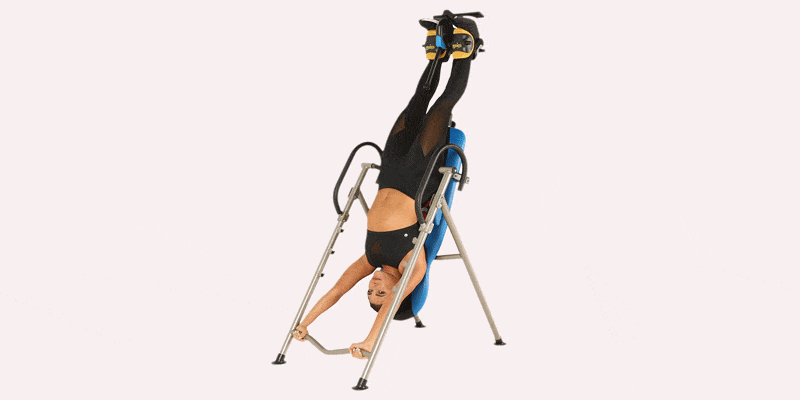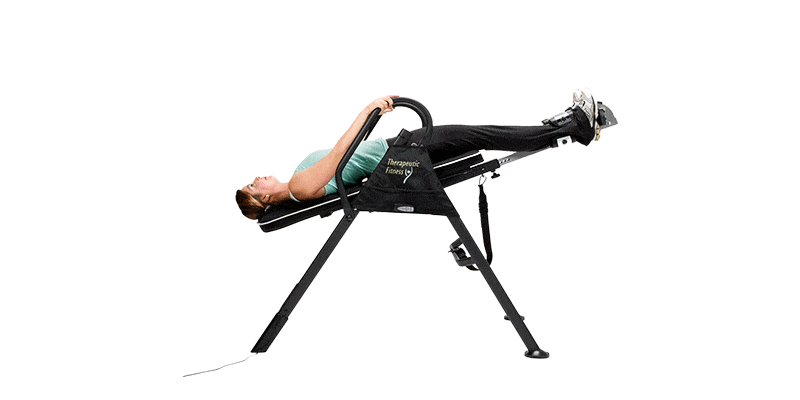Lower back pain is something that we all have to deal with eventually. This is such a problem that gets painful as we grow older.
I am no different; it has been a while since I am suffering from the problem which is why I did some research on the internet to find out possible cures.
This was when I stumbled upon this bit of information. Down below, I will discuss everything I found about inversion table therapy. Check here best quality inversion tables reviews.
What Is Inversion Therapy?

The inversion of a patient’s whole body shifts the gravitational pull and its general direction. The idea is that the absence of this robust and constant pull will help the spine and back relax. Usually, a backbone takes on a lot of the pressure that works to keep us standing erect and moving.
At times, the pressure or certain types of movement cause the spine to lose its strength or natural structure. This could cause severe back pains, bad posture or even disabilities, if the part of the spine is somehow displaced.
This method of treatment – where the body is inverted, and the spine experiences a constant pull for a few minutes – can help realign the structure to its natural form. Many people believe this helps treat a lot of the health problems linked to the spine, and often, they are correct.
Do Inversion Tables Work For Lower Back Pain?
Gravity is one of the primary reasons behind the compression of skeletal structures, muscles, and joints. This, in turn, can cause chronic back pain which may need immediate treatment.
Specific injuries like falling somewhere and hitting your back can cause back pains too. If you injure any part of your skeletal system or joint, chances are, it could affect your back.
Many doctors and therapists suggest exercises, medicines or even surgeries if the cases are too severe. But some may recommend inversion therapy, which may be worth trying out if your doctor thinks so.
However, this cannot be an alternative to surgery, although some studies have shown that it can help decrease the need for operation. Many disabilities can even be cured by inversion therapy, so it is not a fruitless treatment. It works for some instances, and a doctor will be able to tell which patient needs one.
Inversion helps and decompress muscles, joints and bone structures. Taking the pressure of gravity off the body momentarily could help relieve many sorts of back pains.
At times, spinal discs may be the cause of lower back pain. Or it could be due to muscle spasms, joint pain, and tension. Inversion helps with all of these. A lot of the time, lower back pain originates from the spine.
Inversion therapy helps to relieve the spine off a great deal of stress and pressure. In turn, it could help heal any lower back pains caused by that spinal tension. The absence of gravitational pulls an also stop muscle spasms, or it could remove the pressure on any joints.
Lower back pains can, of course, occur due to other reasons. An injury will require surgical or medicinal attention. If it is due to malnutrition, a whole different treatment will be needed. But inversion therapy, when needed can work wonders for lower back pain.
How Does This Work?
When a patient is inverted, all the gravitational pull that the body, and mainly, the spine feels from just one direction, shifts. This shift helps the spine rest and return to its original structure if it had moved due to this tension.
An inversion table holds one upside down for several minutes. Users and therapists can set the angles on the table to invert the patients in a suitable position. The angling of the table matters a lot in the treatment of different types of pains.
Inversion therapy, of course, requires a therapist’s supervision, especially if one wants to use an inversion table. There are other ways people can try inversion therapy; yoga is one. It is just the idea that a body will be inverted, fighting the pulls of gravity and letting the body relax completely.
It is an old theory that hanging upside down can relieve and heal many problems the body faces. A lot of factors depend on the spine and its strength — a strong spine help with posture, movement, flexibility and much more.
What Are the Risk Factors of Using an Inversion Table?
While inversion therapy is wildly helpful in many cases, it comes with a few risks one must be aware of. Some people unused to this therapy may overdo it and strain their muscles, instead of curing them.
There are also patients with certain conditions who are better off without trying this therapy. Inversion can be a strain on the eyes. It also decreases heart rate, increases blood pressure and can cause dizziness.
If a doctor learns of specific health issues you may already have, he/she could decide against inversion therapy. If you somehow get spinal injuries or bone disorders like osteoporosis, it would be best to keep away from inversion.
Since this therapy strains the eyes, if you are sporting any eye infections, better steer clear of this, or you will do more harm. Even having high blood pressure or other cardiovascular diseases might mean that inversion therapy would be a risk for you since it profoundly affects heart rate.
There are a few other factors like obesity, pregnancy and retinal detachment, that call for caution during inversion. A patient with any of these issues will probably be given a completely different treatment.
Final Thoughts
Inversion therapy is indeed as effective as many claims. If you practice this for some weeks regularly, for all the right reasons, this therapy could benefit your life and health greatly. Having a solution that only requires one to depend on a machine and a therapist is one many would want.
Plus, for this, you will only need to spend a few minutes every day upside down. Unlike any hectic exercise routines, this could be done without much strain.
But know your limit, consult with a good doctor or therapist, and only go for it if recommended or prescribed. As this therapy comes with a few risk factors, you would want to be cautious about what you do to your body.

Leave a Reply